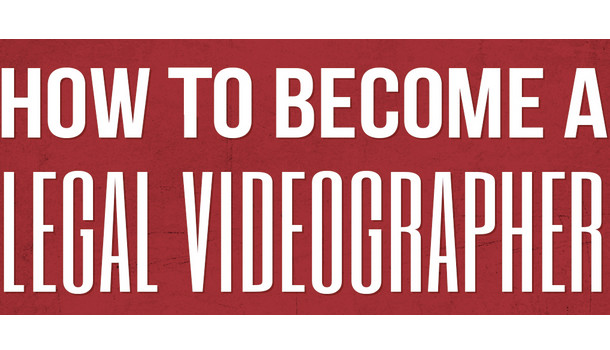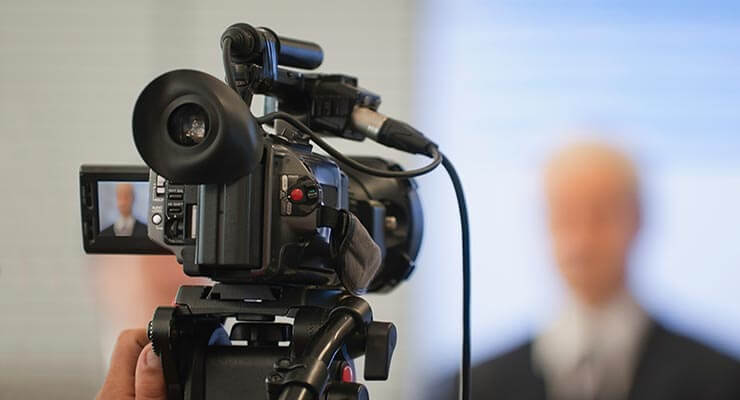The Advantages of Professional Legal Videography in Complicated Legal Instances
The Advantages of Professional Legal Videography in Complicated Legal Instances
Blog Article
Key Advantages of Making Use Of Videography in Legal Cases
The combination of videography in legal cases presents a range of strategic benefits that can considerably affect trial end results. As the legal landscape continues to progress, the ramifications of leveraging videography in trial setups quality closer exam, especially in understanding just how these benefits translate right into concrete results in the court.
Boosted Evidence Discussion
Improved evidence presentation via videography has revolutionized the method legal situations are argued and comprehended in the courtroom. By incorporating premium video clip recordings into lawful procedures, attorneys can share complex details in a more understandable and appealing manner - Legal Videography. Videography enables the visualization of proof, making it simpler for courts and courts to understand the context and value of the here and now realities
Along with improving clarity, videography can additionally capture real-time events, supplying a genuine depiction of cases important to a case. This immediacy can substantially influence the persuasiveness of a disagreement, as visual evidence usually resonates much more highly than written paperwork. Moreover, video evidence can consist of important components such as body language, tone of voice, and environmental elements, every one of which add to an extra holistic understanding of the instance.
Using videography also permits effective company of proof, allowing lawyers to offer their debates in a sensible and systematic way. By purposefully incorporating video right into their discussions, attorneys can facilitate a much more efficient analysis of the evidence, ultimately bring about informed decision-making by the court. The transformative power of videography in legal contexts is both obvious and essential.
Enhanced Witness Reputation

Video proof can also alleviate possible biases that may develop from the witness's look or quirks in a live setting. By providing a well-produced video, lawful groups can ensure that the focus remains on the material of the statement instead of nonessential elements that may weaken integrity. The opportunity to review recorded declarations can strengthen witness uniformity, as inconsistencies can be attended to prior to trial, leading to more dependable testimonies.
Furthermore, the durability of videography supplies a guard against memory decay or misconception over time. By having a clear, verifiable account of witness declarations, legal specialists can develop a stronger instance, enhancing the general credibility of the witness and, subsequently, the integrity of the judicial procedure.
Involving Jury Experience
Videography can significantly boost the court's engagement during lawful process. By integrating top notch video presentations, lawful groups can maintain the focus and catch of jurors, transforming complicated info into aesthetically compelling stories. This interaction is crucial, as jurors usually struggle to absorb dense legal terms and intricate information presented solely via typical means.
Video clip evidence permits jurors to witness events discover this as they unfolded, giving context that composed statements may lack. The usage of dynamic visuals can stimulate emotional actions, making the situation more remarkable and relatable. As an example, security footage or reenactments can highlight key moments, allowing jurors to imagine the evidence in an engaging way.
Additionally, videography can assist in an extra interactive experience. Jurors can see and hear witnesses, which adds a layer of credibility and immediacy that written transcripts can not replicate. This multi-sensory technique promotes deeper comprehension and retention of the here and now product.

Efficient Case Narration
A compelling story is necessary for effective situation storytelling in the court room. Videography works as an effective tool to offer this narrative and craft, engaging the jury and boosting their understanding of the instance. By aesthetically depicting the events causing the lawful disagreement, videography enables lawyers to show complicated scenarios in a clear and relatable fashion. This narration strategy can stimulate psychological feedbacks and foster empathy, producing a deeper link between the jury and the situation.
Incorporating elements such as witness repairs, meetings, and computer animations, videography supplies a multi-dimensional viewpoint that conventional techniques can not attain - Legal Videography. This aesthetic representation not just aids in making clear truths but additionally helps jurors preserve crucial info. The dynamic nature of video clip can damage down barriers of understanding, making complex details more obtainable.
Eventually, reliable instance narration via videography changes the court experience, allowing attorneys to provide their arguments in a influential and engaging way. By using the power of visuals, lawyers can considerably boost their capacity to connect essential narratives and achieve favorable outcomes for their clients.
Conservation of Testimonies
Protecting statements is a crucial aspect of lawful process, as the precision and stability of witness declarations can dramatically impact the result of an instance. Videography functions as an effective tool in this respect, making certain that testaments are recorded in their initial context, thereby lessening the risk of misinterpretation or distortion over time.
By recording non-verbal and spoken cues, videography offers a thorough account of witness statements, which can be indispensable during trial procedures. This technique not just documents the content of the statement however additionally preserves the behavior and emotional reactions of witnesses, providing courts a richer understanding of the testament's integrity and relevance.
Additionally, making use of videography helps with a much more reputable evaluation of testaments during post-trial assessments or pre-trial preparations. Attorneys can revisit taped statements to clear up information, evaluate variances, or develop techniques for cross-examination.
Basically, videography improves the conservation of statements, cultivating a clear legal procedure that can lead to more equitable outcomes. By safeguarding the honesty of witness statements, legal practitioners can much better advocate for their customers and copyright the principles of justice.

Conclusion
Finally, the my response assimilation of videography in lawful instances substantially boosts the discussion of proof, boosts witness trustworthiness, and mesmerizes courts via involving visual material. This tool helps with effective narration, permitting attorneys to share narratives that resonate deeply with decision-makers. Furthermore, videography works as a long-term document of testaments, lowering the risk of memory degeneration. Collectively, these benefits highlight the crucial role of videography in check that contemporary legal practices, ultimately adding to even more informed judicial results.
The assimilation of videography in lawful cases provides a range of tactical benefits that can considerably influence test results.Improved proof presentation through videography has actually transformed the method legal situations are said and understood in the courtroom.Videography can substantially boost the court's engagement throughout lawful proceedings. By visually illustrating the occasions leading to the legal disagreement, videography enables lawyers to highlight complex scenarios in a relatable and clear way.In conclusion, the integration of videography in legal instances dramatically improves the discussion of proof, boosts witness integrity, and captivates juries via engaging aesthetic content.
Report this page